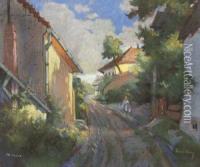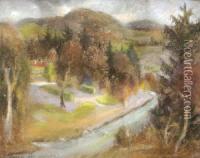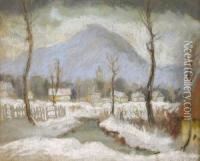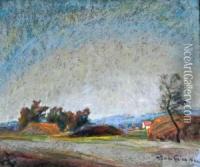Geza Ronai Paintings
Geza Ronai was a Hungarian artist known for his contributions to painting and graphic design, particularly during the first half of the 20th century. He was born in 1891 in the Austro-Hungarian Empire, which would later become Hungary following the empire's dissolution after World War I. His early life was marked by the rich cultural and artistic environment of the late Austro-Hungarian period, which would go on to influence his artistic style.
Ronai's work was characterized by a blend of modernist influences, including elements of Art Nouveau and later Art Deco, reflecting the transitional period of art he lived through. He often depicted scenes of everyday life, landscapes, and still lifes with a strong sense of color and form. His graphic design work was also notable, including poster art, which was an important medium for communication and advertising during the early 20th century.
During his career, Geza Ronai's artistic output mirrored the turbulent times he lived in. Hungary went through significant political and social changes, including the aftermath of World War I, the interwar period, World War II, and the beginning of the Cold War. These events inevitably impacted the art scene in Hungary and the themes Ronai explored in his works.
Unfortunately, Ronai's artwork is not widely known outside of Hungary, and information about his life and career in English is relatively scarce. This lack of widespread recognition is partly due to the geopolitical isolation of Eastern European artists during much of the 20th century, particularly during the years of the Communist regime when Hungary was behind the Iron Curtain.
Ronai passed away in 1962, leaving behind a legacy that is appreciated by connoisseurs of Hungarian art and those interested in the development of modernist movements in Central Europe. His contributions to the visual arts remain part of Hungary's rich artistic heritage, reflecting a unique perspective shaped by the nation's history and cultural evolution.







